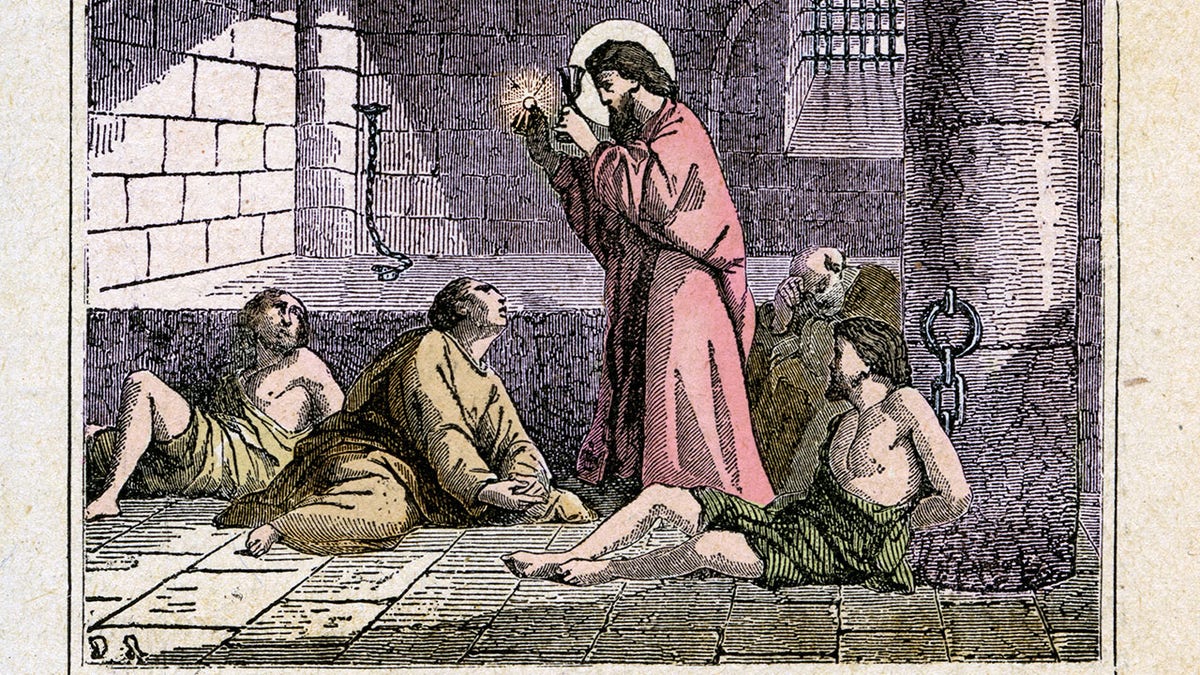Arrest your ex: Texas law enforcement offering Valentine's Day special
Orange County Precinct 4 offering to arrest your ex with outstanding warrants.
Third-century Roman priest Valentinus was brutally beaten and beheaded after marrying couples in defiance of Emperor Claudius II's ban on the sacrament of marriage on this day in history, Feb. 14, 270 A.D.
"When Valentine’s actions were discovered, Claudius ordered that he be put to death," says History.com.
"Valentine was arrested and dragged before the Prefect of Rome, who condemned him to be beaten to death with clubs and to have his head cut off. The sentence was carried out on February 14, on or about the year 270."
The execution of the priest committed to betrothal is celebrated around the world as Saint Valentine's Day. The celebration of romance has been secularized in recent decades as Valentine's Day.
The holiday's association with roses and romance stands in sharp contrast to Saint Valentine's grisly execution — or the contemporary fixation with the saint's dismembered body parts.

Saint Valentine was imprisoned for having joined in marriage the young Serapio, Christian and the Roman legionary Sabino, a pagan. It would be actually two distinct historical characters, a bishop of Terni, and the other Roman presbyter, according to some sources, both executed by decapitation on the via Flaminia. Commemoration Feb. 14th. Colored engraving from Diodore Rahoult, Italy, 1886. (Fototeca Gilardi/Getty Images)
Cathedrals in as many as five different countries claim to house various remains of Saint Valentine.
That tale of his martyrdom for uniting lovers in defiance of the emperor is one of several popular versions of the origin of Saint Valentine's Day — each rooted in truth but shrouded by two millennia of poorly recorded history.
"The holiday's association with roses and romance stands in sharp contrast to Saint Valentine's grisly execution."
There are, for example, two different martyred Saint Valentines venerated on Feb. 14. The holiday may be a blend of their two tales of martyrdom.
VALENTINE'S DAY QUIZ! HOW WELL DO YOU KNOW THESE FACTS ABOUT THE ANNUAL DAY OF LOVE?
"Although not much of St. Valentine's life is reliably known, and whether or not the stories involve two different saints by the same name is also not officially decided, it is highly agreed that St. Valentine was martyred and then buried on the Via Flaminia to the north of Rome," writes Catholic.org, published by the nonprofit Your Catholic Voice Foundation.
At least one source cites a third Saint Valentine of the same era, martyred in Africa.
The exact date of Saint Valentine's execution is unknown. But it is traditionally celebrated on Feb. 14.

Left, an engraving of St. Valentine (3rd century A.D.) created by Cibera in Christian Century, 1853. Right, a red-themed Valentine's Day dinner table with a wrapped present, filled wine glasses and a single red rose. (PHAS/Universal Images Group via Getty Images; iStock)
"In 496 A.D. Pope Gelasius marked February 14th as a celebration in honor of his martyrdom," adds Catholic.org.
The date "is widely recognized as a day for love, devotion and romance."
MEET THE AMERICAN WHO SAVED THE CHAMPAGNE INDUSTRY: MISSOURI SCIENTIST CHARLES VALENTINE RILEY
Its celebration as a day of romance is traced by many scholars to a poem penned in 1375 by Middle English writer Geoffrey Chaucer, best known as the author of "The Canterbury Tales."
"For this was sent on Seynt Valentyne’s day/Whan every foul cometh there to choose his mate," the "Father of English literature" wrote in "Parliament of Foules," which traced the mating of birds to mid-February.
"Valentine's Day has been celebrated for decades in the largely Hindu nation of India."
During Chaucer's "time in history, courtly love flourished, and couples took the occasion to express their love in the form of flowers, candies and cards," claims Christianity.com.

People seen in front of a gift shop decorated with items for sale for Valentine's Day, as seen in Kolkata, India, on Feb. 13, 2023. (Debarchan Chatterjee/NurPhoto via Getty Images)
The appeal of Saint Valentine's Day as a day to honor love has spread far beyond the Christian world.
It has been celebrated for decades, for example, in the largely Hindu nation of India.
Government officials there have asked citizens to celebrate Valentine's Day by hugging cows "to better promote Hindu," according to the Associated Press.
CLICK HERE TO SIGN UP FOR OUR LIFESTYLE NEWSLETTER
Feb. 14 has been dubbed "Cow Hug Day" in India this year.
"St. Valentine is the Patron Saint of affianced couples, beekeepers, engaged couples, epilepsy, fainting, greetings, happy marriages, love, lovers, plague, travelers and young people," writes Catholic.org.
"He is represented in pictures with birds and roses."

St. Valentine's skeleton lies under Whitefriar Church in Dublin. In 1950, a statue and shrine were built to honor St. Valentine and placed in the church. Love-seeking individuals turn up at his site the whole year and especially on every St. Valentines looking for help in finding that special one. (Artur Widak/NurPhoto via Getty Images)
There is another gruesome side of the story.
"Behind the rosy facade of Valentine’s Day is a mysterious — and grisly — tale of a beheading and body parts scattered across Europe," writes National Geographic.
CLICK HERE TO GET THE FOX NEWS APP
"Now in Dublin a church claims to exhibit St. Valentine’s heart; in a Rome basilica his supposed skull is displayed; in a Glasgow friary his skeleton sits in a golden box; in a Prague basilica his shoulder bone is an attraction; and in a Madrid church his remains are encased in glass."
For more Lifestyle articles, visit www.foxnews.com/lifestyle.

